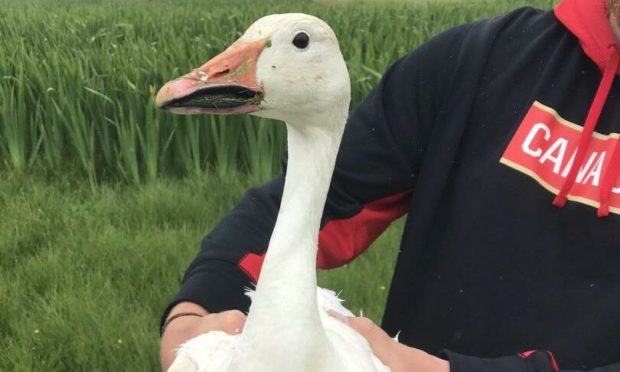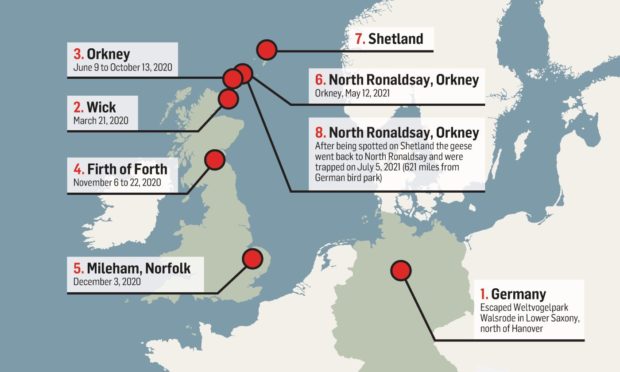Two snow geese have been spotted in Orkney, but it has been discovered that they are more than a little far from home after they escaped.
The pair have been summering on North Ronaldsay and travelled around 621 miles to get there.
One of the birds was bearing a ring that showed they had flown to the island from Germany.
The snow geese had escaped from Weltvogelpark, one of the biggest bird parks in the world, just north of Hanover, before taking a shine to Orkney.
Weltvogelpark contains more than 4,000 birds from around 650 different species, some of which include snow geese.
The movements of the geese can be tracked as they are both ringed.
How did the geese escape to Orkney?
They first arrived in Scotland in March last year, making an appearance in Wick.
After that, they flew around Orkney between June and October before flying south to Forth and Lothian alongside pink-footed geese.
Moving further south still, they were around Norfolk around December, before moving back up to their favourite spot in Orkney this year.
The birds first reappeared on North Ronaldsay on May 12, then made a quick trip to Foula in Shetland before returning there.
Both birds were trapped on July 5, and the discovery of their origins was made.
Geese are not the first to escape to Orkney
Website BirdGuides said this was not the first time snow geese are believed to have escaped from the German park and made their way to Scotland.
They said: “Interestingly, a flock of six in Orkney at Wasbister, Sandwick, in April 2012 are thought to have included a colour-ringed bird from the German feral population.
“A number of large flocks of the species have been noted across England and Scotland in recent months, and it is tempting to speculate on their potential origins. This has included high counts of 21 at Loch Barvas, Lewis, and 16 at Loch Gilp, Argyll, in May, as well as 25 at Corsham Park, Wiltshire, in June, while a flock of 37 was tracked along the coasts of Lothian and North East England on 3-4 June.”
They said that escapes are a problem in the captive bird trade, and that the birds’ natural instincts would easily kick in.
They said: “Despite increased regulations of the captive bird trade, escapes are still very much a problem, particularly with species which find it hard to suppress an innate migratory urge.
“This is true even of birds in the right place, with the right carrier species and at the right time of year – as their time spent with pink-footed geese shows. The presence of further feral populations clouds the issue even further, and debates over provenance will continue to remain a contentious and much-debated topic among birders.”

